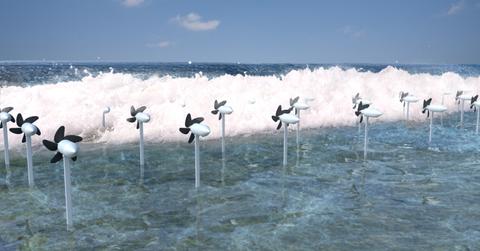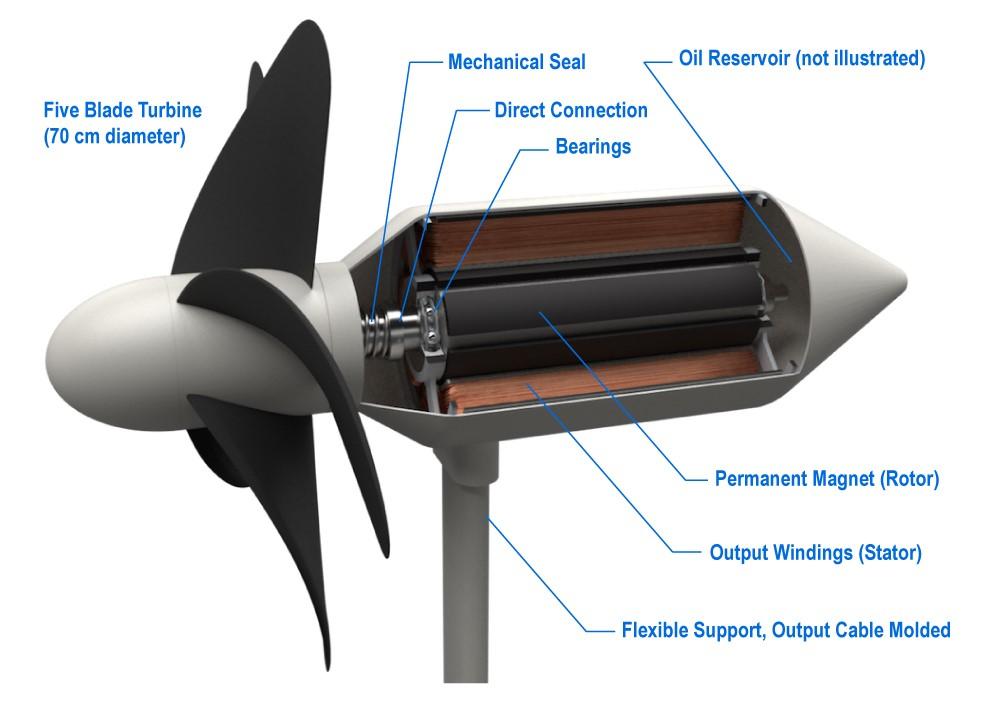New Turbines Catch Waves To Generate Power For Japan's Coasts
These flower-like water turbines harness renewable energy from the incredibly powerful waves common around Japan's coasts. They can also help protect Japan's coastal lands.
Updated Sept. 29 2017, 2:38 p.m. ET
Given the fact that Japan is surrounded by water, and is made up of four major islands, they've long held a practice of using tetrapods to keep the ocean from eroding their land. Tetrapods are concrete blocks, shaped similarly to pyramids, that stand up against massive waves common on Japan's coasts. In the age of renewable energy, however, people have recently thought up an important question: How can we use these naturally occurring waves to generate some energy? According to recent research, it's entirely possible to generate some green electricity from these powerful waves.
Researchers from the Okinawa Institute of Science and Technology Graduate University (OIST) have found a way to compliment tetrapods with turbines that could pull this feat off. These turbines have five unique petal-like blades and resemble flowers. That's right: Flower-like energy turbines may be the key to powering coastal Japan without harming the environment. Of course, researchers have also put a lot of time into protecting the wildlife living in the ocean while designing these, as they don't want to move forward with a plan that would help the environment in one area, but harm it in another.
These flower-like turbines, formally called Wave Energy Converters (WEC), are created from softer, flexible material. This means that when animals get in contact with the spinning blades, they won’t be injured. This also helps protect the turbine when harsher conditions arise. The flexible blades will be able to release any stress caused in those events.
WECs will be located just above sea level with waves constantly crashing into them. Its ceramic shell will keep out seawater while the inner workings will generate electricity. This will feed through an output cable in the stem of the turbine and into the electrical grid. No extra maintenance will be required since tetrapods already need to be checked periodically. Each turbine has a life expectancy of a whopping 10 years.
Potential for a large amount of energy capacity exists for this renewable source. Professor Tsumoru Shintake noted that by filling up one percent of shores with tetrapods with these flower-like turbines, there could be double-digit gigawatt capacity: “Using just 1% of the seashore of mainland Japan can [generate] about 10 [gigawatts of energy], which is equivalent to 10 nuclear power plants. That’s huge.”
With roughly 30 percent of shores along mainland Japan covered with tetrapods, that could be an enormous amount of renewable energy generation. Further testing will need to be done on a smaller scale before reaching those lofty expectations. While the diameter of the turbine will be 70 centimeters, the research team is working on installing models at half that size. They will be activating two of them while using an LED light for power testing.
Shintake hopes in the future that this technology will break through and WECs will be spotted all over Japan’s shorelines. We don’t know how much energy each turbine can produce or its efficiency levels yet, but it’s certainly a turbine to keep an eye on with tests upcoming. Being able to withstand weather conditions and protecting wildlife are major benefits. Should it prove successful, Shintake could be seeing his dream come true.

